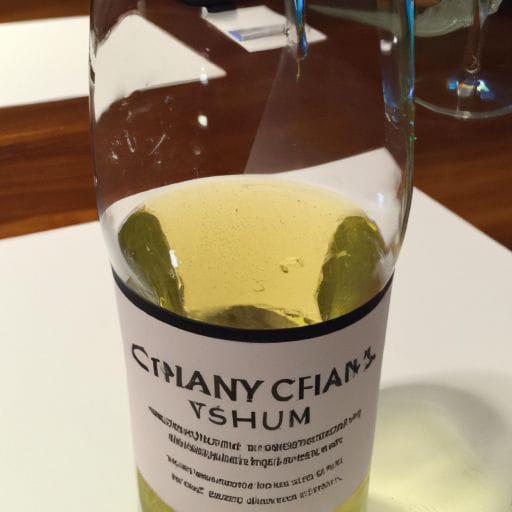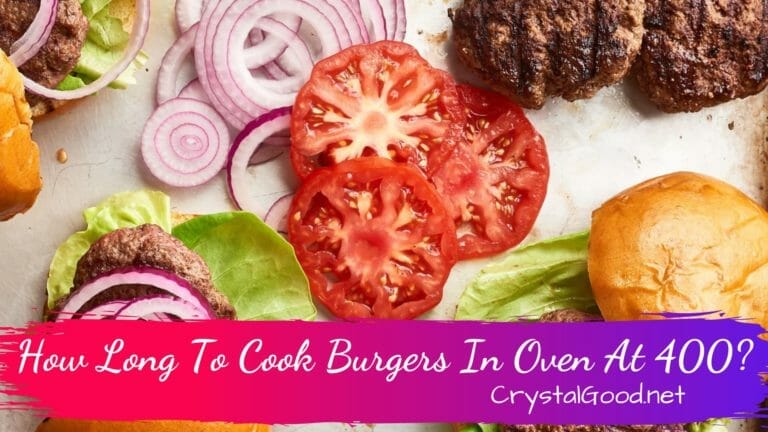What does Chardonnay tastes like? Chardonnay is one of the world’s most popular white wines, and its flavor profile has something for every wine lover. From dry to sweet, light-bodied to full-bodied – there’s a style for everyone. In this article, we’ll explore various flavors and aromas that come together to create the unique experience of drinking a glass of chardonnay. We’ll also discuss factors such as oak aging, origin, winemaking style and climate that affect a final product’s taste. So grab your glasses and follow us on this adventure into discovering what makes chardonnay so special!

Exploring the Different Varieties of Chardonnay and Their Unique Flavors
Contents
- 1 Exploring the Different Varieties of Chardonnay and Their Unique Flavors
- 2 How to Pair Chardonnay with Food for the Perfect Meal
- 3 The History of Chardonnay and Its Rise to Popularity
- 4
- 5 The Benefits of Aging Chardonnay and How to Store It Properly
- 6 The Difference Between Chardonnay and Other White Wines
- 7 How to Choose the Right Chardonnay for Your Palate
- 8 The Best Chardonnays from Around the World
- 9 The Art of Making Chardonnay: A Winemaker’s Guide
- 10 Grape Selection
- 11 Fermentation
- 12 Aging
- 13 Bottling
- 14 FAQs:
- 15 1. What does Chardonnay taste like?
- 16 2. Is Chardonnay sweet or dry?
- 17 3. What foods pair well with Chardonnay?
- 18 4. What is the difference between Chardonnay and Sauvignon Blanc?
- 19 5. What is the difference between Chardonnay and Pinot Grigio?
- 20 6. What is the difference between Chardonnay and Riesling?
- 21 7. What is the difference between Chardonnay and White Zinfandel?
- 22 8. What is the best way to serve Chardonnay?
- 23 Conclusion
Chardonnay is one of the most popular and versatile white wines in the world. With its bright, crisp flavors and wide range of styles, it’s no wonder why it’s so beloved! From light and fruity to full-bodied and oaky, there’s a Chardonnay for every palate. Let’s explore the different varieties of Chardonnay and their unique flavors.
- Unoaked Chardonnay is light and fruity, with bright acidity and notes of citrus, green apple, and tropical fruit. It’s perfect for sipping on its own or pairing with lighter dishes like salads and seafood.
- Oaked Chardonnay is full-bodied and creamy, with notes of butter, oak, and vanilla. It’s great for pairing with richer dishes like creamy pastas and roasted meats.
- Sparkling Chardonnay is light and bubbly, with notes of citrus and green apple. It’s perfect for special occasions and pairs well with light appetizers.
- Ice Wine Chardonnay is sweet and intense, with notes of honey, apricot, and peach. It’s great for sipping on its own or pairing with desserts.
- Late Harvest Chardonnay is sweet and luscious, with notes of honey, apricot, and tropical fruit. It’s perfect for sipping on its own or pairing with desserts.
No matter what type of Chardonnay you choose, you’re sure to find a delicious and unique flavor that you’ll love! So go ahead and explore the wonderful world of Chardonnay and discover your favorite variety today!
How to Pair Chardonnay with Food for the Perfect Meal
When it comes to pairing food with wine, Chardonnay is a great choice. This versatile white wine has a wide range of flavors, from buttery and oaky to crisp and fruity. With its bright acidity and creamy texture, Chardonnay pairs perfectly with a variety of dishes. Here are some tips for creating the perfect meal with Chardonnay.
Start with a light appetizer. Chardonnay pairs well with lighter dishes, such as salads, seafood, and vegetables. Try a salad with a light vinaigrette or a seafood dish like shrimp scampi.
For the main course, choose a dish with a creamy sauce. Chardonnay’s creamy texture and buttery notes make it a great match for dishes like chicken alfredo, macaroni and cheese, or creamy risotto.
For a side dish, choose something with a bit of acidity. Chardonnay’s bright acidity pairs well with dishes like roasted vegetables, grilled asparagus, or a light citrus salad.
Finish the meal with a sweet dessert. Chardonnay’s fruity notes make it a great match for desserts like apple pie, peach cobbler, or a light fruit tart.
With these tips, you can create the perfect meal with Chardonnay. Whether you’re hosting a dinner party or just enjoying a meal at home, Chardonnay is a great choice for pairing with food. Enjoy!
The History of Chardonnay and Its Rise to Popularity
Chardonnay is one of the most popular white wines in the world, and it has a long and interesting history. It is believed to have originated in the Burgundy region of France, where it was first cultivated in the Middle Ages. The grape was then spread to other parts of Europe, including Germany, Italy, and Spain.
In the late 19th century, Chardonnay was introduced to California, where it quickly became a favorite among winemakers. The grape was well-suited to the climate and soil of the region, and it flourished in the warm, sunny climate.
Chardonnay’s popularity began to grow in the 1970s, when it was used to make a new style of white wine known as “oaked Chardonnay.” This style of wine was aged in oak barrels, which gave it a richer, more complex flavor. This style of Chardonnay quickly became popular in the United States and around the world.
Today, Chardonnay is one of the most popular white wines in the world. It is produced in many different styles, from light and crisp to rich and buttery. It is also used to make sparkling wines, such as Champagne and Prosecco.
No matter what style of Chardonnay you prefer, it is sure to be a crowd-pleaser. Its long history and popularity make it a classic choice for any occasion. So, raise a glass of Chardonnay and toast to its long and illustrious history!
The Benefits of Aging Chardonnay and How to Store It Properly
Aging Chardonnay can be a rewarding experience for wine lovers. Not only does it bring out the best in the flavor and aroma of the wine, but it also allows you to enjoy the complexity of the wine as it matures. Here are some of the benefits of aging Chardonnay and how to store it properly.
One of the main benefits of aging Chardonnay is that it allows the wine to develop a more complex flavor profile. As the wine ages, the flavors become more intense and the aromas become more pronounced. This can be especially enjoyable for those who enjoy a full-bodied, complex wine.
Another benefit of aging Chardonnay is that it can help to soften the tannins in the wine. Tannins are compounds found in wine that can give it a bitter or astringent taste. As the wine ages, the tannins become less noticeable, resulting in a smoother, more enjoyable flavor.
Finally, aging Chardonnay can also help to improve the overall quality of the wine. As the wine ages, it develops a more complex flavor profile and the aromas become more pronounced. This can make the wine more enjoyable to drink.
When it comes to storing Chardonnay, it is important to keep it in a cool, dark place. This will help to preserve the flavor and aroma of the wine. It is also important to store the wine in a place that is free from extreme temperatures, as this can cause the wine to spoil.
Aging Chardonnay can be a rewarding experience for wine lovers. Not only does it bring out the best in the flavor and aroma of the wine, but it also allows you to enjoy the complexity of the wine as it matures. By following the tips above, you can ensure that your Chardonnay is stored properly and that you get the most out of your aging experience.
The Difference Between Chardonnay and Other White Wines
Chardonnay is one of the most popular white wines in the world, and for good reason! It’s a versatile and delicious wine that pairs well with a variety of foods. But what makes Chardonnay different from other white wines?
First, Chardonnay is a full-bodied white wine, meaning it has a richer, more complex flavor than other white wines. It’s also aged in oak barrels, which gives it a unique flavor profile. The oak aging process also adds a hint of buttery, nutty, and even smoky notes to the wine.
Chardonnay also has a higher alcohol content than other white wines, usually ranging from 12-14%. This makes it a great choice for those who prefer a bolder, more robust flavor.
Finally, Chardonnay is a dry white wine, meaning it has no residual sugar. This makes it a great choice for those who prefer a crisp, clean taste.
So, if you’re looking for a white wine that’s full-bodied, complex, and dry, Chardonnay is the perfect choice! With its unique flavor profile and higher alcohol content, it’s sure to please even the most discerning palates.
How to Choose the Right Chardonnay for Your Palate
Are you looking for the perfect Chardonnay to pair with your next meal? With so many different styles of Chardonnay available, it can be hard to know which one to choose. But don’t worry – we’ve got you covered! Here are some tips to help you find the perfect Chardonnay for your palate.
- First, consider the flavor profile you’re looking for. Do you prefer a crisp, light Chardonnay with subtle fruit flavors? Or do you prefer a bolder, oaky Chardonnay with more intense flavors? Knowing what kind of flavor you’re looking for will help you narrow down your choices.
- Next, consider the region the Chardonnay is from. Different regions produce different styles of Chardonnay, so it’s important to know where your wine is from. For example, Chardonnays from California tend to be bolder and more oaky, while Chardonnays from France tend to be lighter and more delicate.
- Finally, don’t be afraid to experiment! There are so many different styles of Chardonnay out there, so don’t be afraid to try something new. You may be surprised by how much you like it!
With these tips in mind, you’ll be sure to find the perfect Chardonnay for your palate. So go ahead and explore – you’re sure to find something you love!
The Best Chardonnays from Around the World
Chardonnay is one of the most popular white wines in the world, and for good reason! With its bright, crisp flavors and wide range of styles, it’s no wonder that Chardonnay is a favorite among wine lovers. From the classic French Chablis to the bold and buttery California Chardonnays, there’s something for everyone. Here are some of the best Chardonnays from around the world that you should try!
- France: Chablis is the classic French Chardonnay, and it’s known for its crisp, mineral-driven flavors. It’s a great choice for seafood dishes, and it pairs well with light cheeses.
- Australia: Australian Chardonnays are known for their bold, tropical fruit flavors. They’re great for sipping on their own, or they can be paired with grilled meats and vegetables.
- California: California Chardonnays are known for their buttery, oaky flavors. They’re great for pairing with creamy dishes, like risotto or macaroni and cheese.
- New Zealand: New Zealand Chardonnays are known for their bright, citrusy flavors. They’re great for pairing with seafood dishes, like grilled salmon or seared scallops.
- Argentina: Argentine Chardonnays are known for their intense, floral aromas. They’re great for pairing with spicy dishes, like Thai curries or Mexican enchiladas.
No matter what type of Chardonnay you prefer, there’s something for everyone! So grab a bottle and start exploring the wonderful world of Chardonnay!
The Art of Making Chardonnay: A Winemaker’s Guide
Welcome to the wonderful world of winemaking! Chardonnay is one of the most popular white wines in the world, and making it is an art form. In this guide, we’ll explore the process of making Chardonnay, from grape selection to fermentation and aging.
Grape Selection
The first step in making Chardonnay is selecting the right grapes. Chardonnay grapes are usually harvested in the fall, and the best grapes are those that are ripe and have a good balance of acidity and sugar. The grapes should be free of disease and pests, and should have a good flavor profile.
Fermentation
Once the grapes have been selected, they are crushed and pressed to extract the juice. The juice is then placed in a fermentation tank, where it is allowed to ferment for several weeks. During this time, the yeast converts the sugar in the juice into alcohol.
Aging
Once the fermentation process is complete, the wine is aged in oak barrels for several months. This process adds complexity and depth to the flavor of the wine. The winemaker can choose to age the wine in either new or used barrels, depending on the desired flavor profile.
Bottling
Once the aging process is complete, the wine is ready to be bottled. The winemaker will decide on the type of bottle and label to use, as well as the amount of sulfites to add to the wine. The wine is then sealed and ready to be enjoyed.
Making Chardonnay is an art form, and the winemaker has many decisions to make throughout the process. With the right grapes, fermentation, aging, and bottling techniques, you can create a delicious and unique Chardonnay that will be enjoyed by all. Cheers!
FAQs:
1. What does Chardonnay taste like?
Chardonnay typically has a buttery, creamy, and oaky flavor with notes of tropical fruit, citrus, and stone fruit. It can also have hints of vanilla, honey, and spice.
2. Is Chardonnay sweet or dry?
Chardonnay can be either sweet or dry, depending on the winemaking process. Most Chardonnays are dry, but some producers will add a bit of residual sugar to create a sweeter style.
3. What foods pair well with Chardonnay?
Chardonnay pairs well with a variety of foods, including seafood, poultry, and creamy sauces. It also goes well with dishes that have a bit of spice, such as Thai or Indian cuisine.
4. What is the difference between Chardonnay and Sauvignon Blanc?
Chardonnay is typically fuller-bodied and has a richer flavor than Sauvignon Blanc. Chardonnay is also more oaky and buttery, while Sauvignon Blanc is more grassy and herbal.
5. What is the difference between Chardonnay and Pinot Grigio?
Chardonnay is typically fuller-bodied and has a richer flavor than Pinot Grigio. Chardonnay is also more oaky and buttery, while Pinot Grigio is more light and crisp.
6. What is the difference between Chardonnay and Riesling?
Chardonnay is typically fuller-bodied and has a richer flavor than Riesling. Chardonnay is also more oaky and buttery, while Riesling is more floral and fruity.
7. What is the difference between Chardonnay and White Zinfandel?
Chardonnay is typically fuller-bodied and has a richer flavor than White Zinfandel. Chardonnay is also more oaky and buttery, while White Zinfandel is more sweet and fruity.
8. What is the best way to serve Chardonnay?
Chardonnay is best served chilled, at a temperature of 45-55 degrees Fahrenheit. It can also be served slightly chilled or at room temperature, depending on the style of the wine.
Conclusion
In conclusion, Chardonnay is a versatile and complex white wine that can range from light and crisp to full-bodied and oaky. Its flavor profile can vary greatly depending on the region, winemaking techniques, and aging process. Chardonnay can have notes of citrus, apple, pear, melon, tropical fruit, butter, oak, and vanilla. Ultimately, the taste of Chardonnay is unique to each individual and can be enjoyed in a variety of ways.














